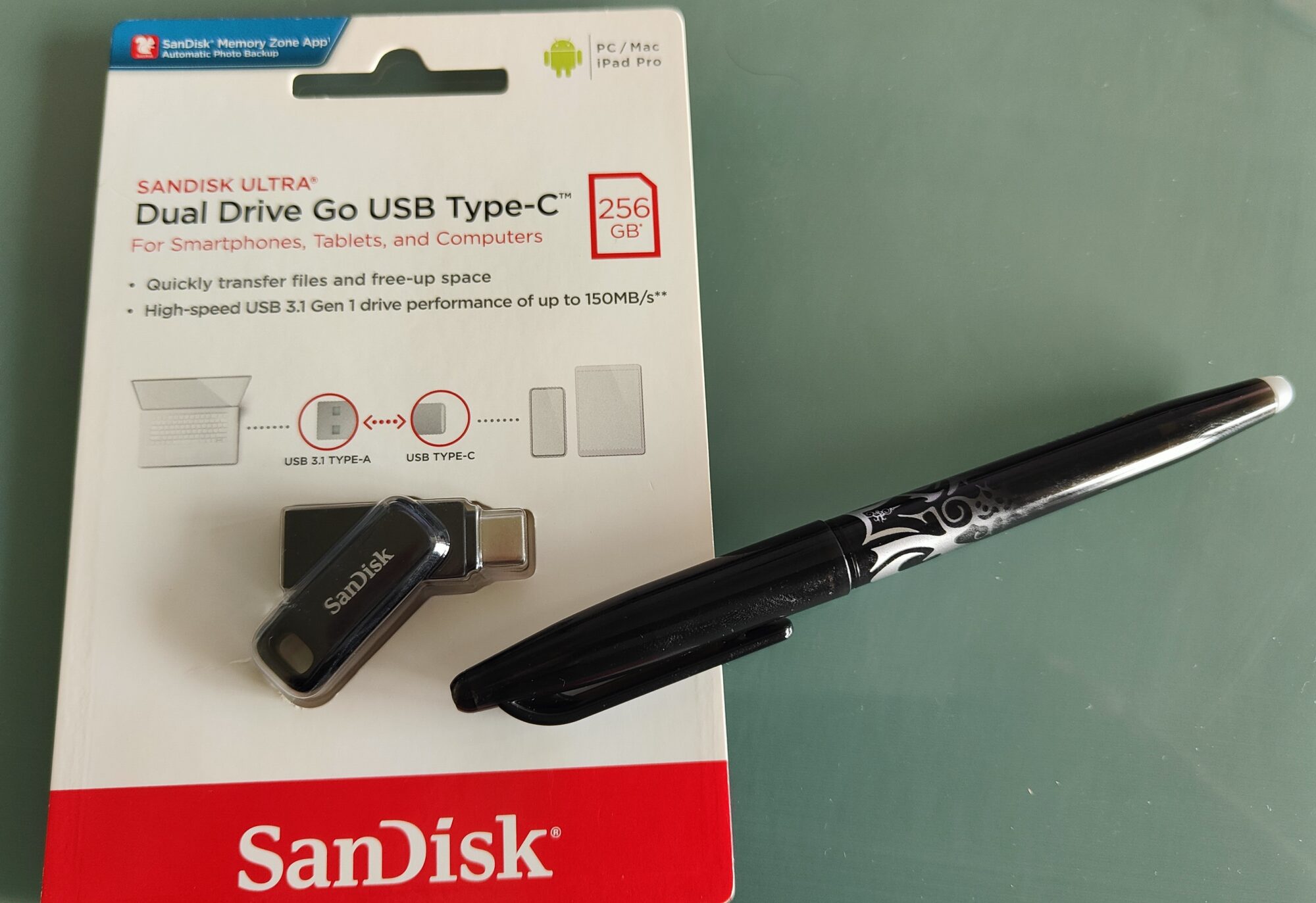I have a holiday of a lifetime planned, and like most people, I will use my smartphone to take pictures. Some of the photos I take will be priceless, but what if I lose or damage my phone? Where I am going, there is little mobile coverage, and global roaming is expensive to upload Gigabytes of data. We review the Sandisk Dual Drive Go USB Type-C to see if it solves our problem and potentially others.
Why do you need to back up a Smartphone?
Backing up a smartphone is essential for safeguarding your data in case of loss, theft, or device malfunction. Having two or more copies of your photos, contacts, and even your apps and settings means you can quickly get back to where you were before the disaster.
Beyond backup, how many times have you heard someone say, “I have run out of room on my phone?” Another common question is, “How do I transfer images from my phone to my computer?”
If you are tech-savvy and Wi-Fi and mobile data are accessible and cheap, the cloud is your friend, easily helping with data transfer.
Alternatively, you can connect your smartphone to a PC using a USB cable and transfer data that way.
The most tactile way is to use an attached memory card, stick or hard drive where data is copied onto the drive and accessed from another device.
What are the Sandisk Dual Drive Go features?
The Sandisk Dual Drive Go is a tiny USB flash drive with a USB-C and A connector for smartphone file transfers and backup.

The drive is available in four colours, and memory sizes include 32GB, 64GB, 128GB, 256GB, 512GB, and 1 TB.
With its USB-C connector, the Sandisk can be connected to an Apple iPhone 15 or an Android phone. The other end of the flash drive has a USB-A plug, which enables the drive to be connected to any PC.
Specific compatibility for phones, laptops, and tablets with operating systems:
- iOS 10.0.2+
- Android 11+
- macOS v.10.9+
- Windows 10+
The drive is tiny, at just 44x12x9 mm, and weighs approximately 4 grams. It could be easily lost, so a keyring hole is a welcome feature. A 5-year warranty and a swivel cover protect the USB-C plug on the move.
Using the Delta 3 Plus
I tested the 256GB version of the Sandisk, which matches the memory capacity of my smartphone.
When we connect to our Android phone, the Android file manager automatically opens. Alternatively, Sandisk has an app available on the App Store called Sandisk Memory Zone Explore.
You can copy or move files or folders from the Android file manager to the drive. Moving a file removes it from the phone, freeing up space for photos.
The Sandisk Memory Zone app has similar functionality but also includes an automatic or manual backup function. If set to auto, it backs up anything on your phone by simply plugging in the flash drive.
I am always taking photos of products for reviews, and although I can use the cloud or a direct connection from my PC, I mostly email the photos. This drive is a more tactile and simpler method of transferring a photo with no quality loss and, in most cases, quicker. Moving a few photos to a dedicated folder ensures that when you plug the drive into your PC, you are not waiting for your PC to interrogate 2,000 photos before you download the one you want.
Who is the Sandisk Dual Drive Go for?
At $45, you can buy a 128GB drive that matches most smartphones’ memory capacity. This is an economical way to ensure you can back up your smartphone anywhere.
If you are not technically minded, this physical product allows you to move files, photos, and videos off your phone, freeing up space. Having both a USB-C and USB-A plug gives the product versatility to connect to any product except older Apple products.